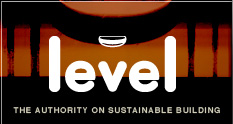Health and Safety
Taking care with materials, equipment and work procedures and dealing with hazards.
Health and Safety
The construction sector is one of the largest employers in Aotearoa New Zealand – it also has a significant proportion of workplace-related illnesses and accidents.
Of all industries, construction is responsible for the largest number of new work-related claims accepted by ACC. The figure for 2021 was 38,600, up by 2,100 from 2020.
The majority of injuries in the construction sector occur from falls or falling objects, or while using power tools. Hearing loss is common. Hazardous materials such as lead paint, wood and cement dust and solvents can be responsible for respiratory and other health-related problems.
Most work-related deaths in the building industry are the result of past exposure to asbestos. WorkSafe says that an estimated 220 New Zealanders die from asbestos-related disease each year.
Workplace housekeeping
Good workplace housekeeping practices include:
- maintaining a tidy site
- having clear access and egress ways
- following good site management practices
- having designated areas for material delivery and waste storage
- regular maintenance of plant and equipment
- installing barriers where required
- erecting signage as required
- provision and maintenance of sanitary facilities for staff.
Failure to maintain good workplace practices can result in construction-related health and safety issues and inefficiencies such as increased likelihood of injuries, loss of working efficiency due to multiple handling of materials and bottlenecks in work flow and movement around the site.
Facilities required on site
The Health and Safety at Work (General Risk and Workplace Management) Regulations 2016 requires the person in charge of the business to ensure a workplace (i.e. building site) has certain facilities. They include:
- There is enough lighting and ventilation for workers to carry out work safely.
- Workers doing their job in extreme heat or cold can do so safely.
- Adequate facilities are provided for workers, including:
– toilets
– drinking water
– hand-washing facilities
– a place where workers can eat and take breaks
– adequate and accessible first aid equipment
– facilities where workers who become unwell can rest if it is not reasonable for them to leave the site. - An adequate number of workers on site are trained in first aid, or workers have access to other people trained to give first aid.
All these facilities must be clean, safe, accessible and kept in good working order.
The Health and Safety at Work Act
The Health and Safety at Work Act requires all businesses, regardless of size, to engage their staff in safety issues.
The Act focuses on managing critical risks and taking actions that reduce workplace harm. Businesses have to take steps that are “reasonably practicable”. Action will depend on the level of risk involved and what a business can control.
Regulations have been developed to cover risk and workplace management, asbestos, major hazard facilities, and worker participation.
Notifiable injuries
A serious work injury that requires immediate treatment other than just first aid must be reported to WorkSafe. Examples include serious deep cuts, loss of consciousness, a burn serious enough to require a compression garment or skin graft, a metal fragment or wood chip entering the eye, or a spinal injury.
You can report an incident to WorkSafe by phone (0800 030 040), or notifying WorkSafe online.
Recent statistics indicate that the construction industry has the highest number of notifiable injuries or illnesses of all industry groups.
Mental health
While physical injuries such as falls from roofs typically come to mind thinking of health and safety, mental health is also crucially important for a healthy workplace. University of Otago research released in late 2021 found that New Zealand construction workers are more than twice as likely to die by suicide than the rest of the workforce. The age groups at highest risk are 20–24-year-old men followed by 45-49-year-old men. Māori men are significantly overrepresented.
The programme Mates in Construction is working to improve mental wellness and reduce suicide in the construction industry. On-site training has been provided at over 250 worksites. The programme has an 0800 number for anyone who needs help: 0800 111 315.
WorkSafe also has useful resources around work-related stress and bullying at work.
Updated: 29 May 2023

